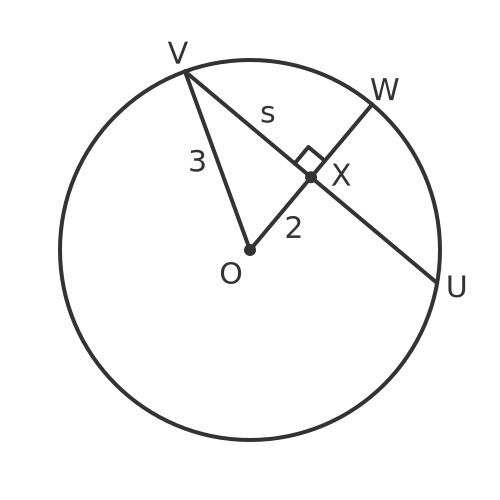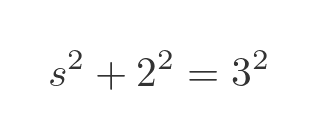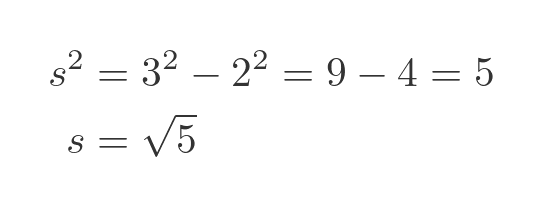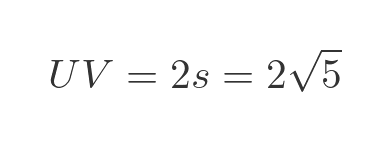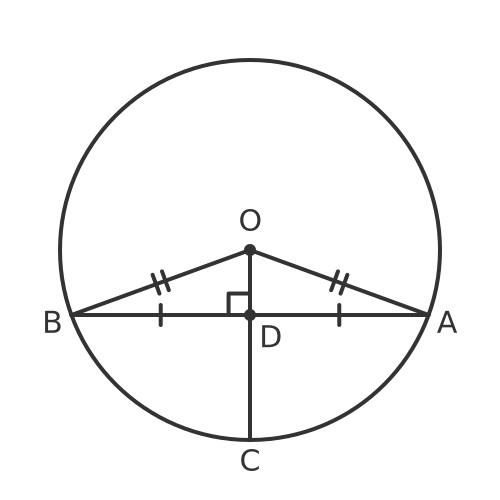Perpendicular bisector of chord theorem
Categories: gcse geometry circle geometry circle theorems

The chord bisector theorem is a circle theorem. This article looks at the theorem and proof, with several exam-style questions and answers at the end.
A chord is any line drawn across a circle, from one point on the circumference to another:
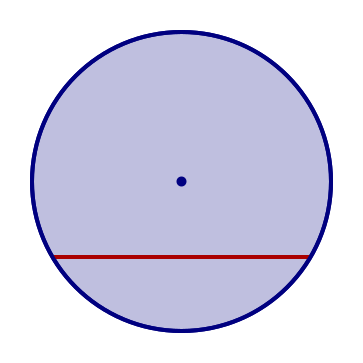
Remember that two lines are perpendicular if they meet at a right angle, and that a bisector is a line that cuts something exactly in half. So the perpendicular bisector of a chord is the line that cuts the chord in half, at a right angle:
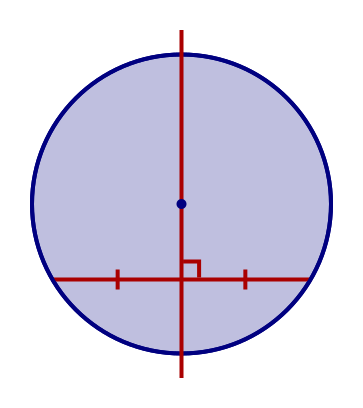
This theorem states that the perpendicular bisector of a chord passes through the centre of the circle.
This theorem is covered in this video on circle theorems:
Understanding the theorem
The theorem describes three conditions of a chord bisector:
- It meets the chord at a right angle.
- It cuts the bisector into two equal parts.
- It passes through the centre of the circle.
The theorem tells us that if any two of these conditions are true, then the third condition must also be true. There are three cases:
- If we are told that a line crosses a chord at a right angle, and divides the chord into two equal parts, then that line must pass through the centre of the circle.
- If we are told that a line crosses a chord at a right angle, and passes through the centre of the circle, then that line must divide the chord into two equal parts.
- If we are told that a line divides the chord into two equal parts, and passes through the centre of the circle, then that line must cross the chord at a right angle.
The opposite is also true. If any one of the conditions is not true, then the other two conditions cannot both be true. For example, if the line doesn't pass through the centre of the circle then it cannot cross the chord at a right angle and divide the chord into two equal parts. One of those things might be true, or neither might be true, but they cannot both be true.
Proof
To prove this theorem, we can form a triangle AOB, where O is the centre of the circle, and A and B are the points where the chord meets the circumference:

Since OA and OB are both radii of the circle, they are of equal length. This means that the triangle is an isosceles triangle (see the two radii rule):

The perpendicular bisector of the side AB (the chord) is an axis of symmetry of the isosceles triangle:
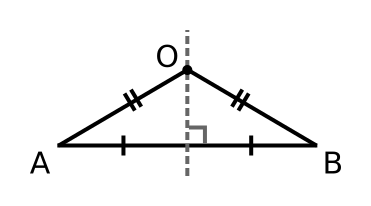
We know that the axis of symmetry of an isosceles triangle passes through the vertex O, (which is the centre of the circle).
Therefore the perpendicular bisector of the chord passes through the centre of the circle.
Questions
Here are some exam-style questions on the chord bisector theorem. The Circle Theorems Workbook contains additional questions and answers related to circle theorems.
Question 1
The diagram shows a circle with a chord AB. The radius OC divides the chord into two equal parts, AD and BD:
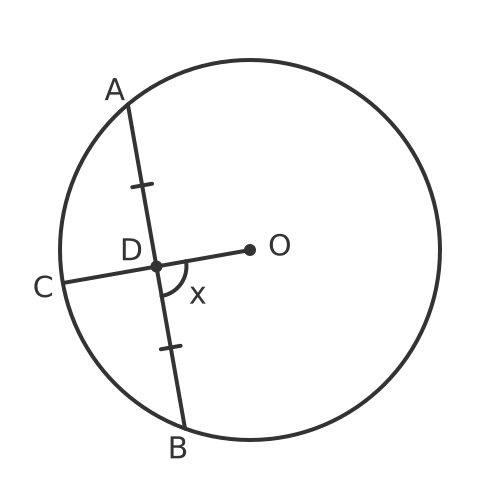
What is angle $x$? Show your working.
Question 2
In the diagram, SR is a chord of the circle, with length 6. The radius OT intersects the chord at P. The radius and chord make a right angle:
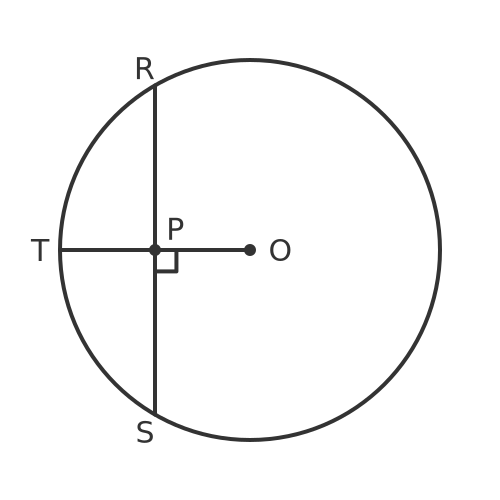
What is the length SP? Give a reason for your answer.
Question 3
The diagram shows a circle of radius 3, centre O. U and V are two points on the circumference of the circle. The radius OW intersects the line UV at point X, making an angle of 90°. The line OX has length 2:
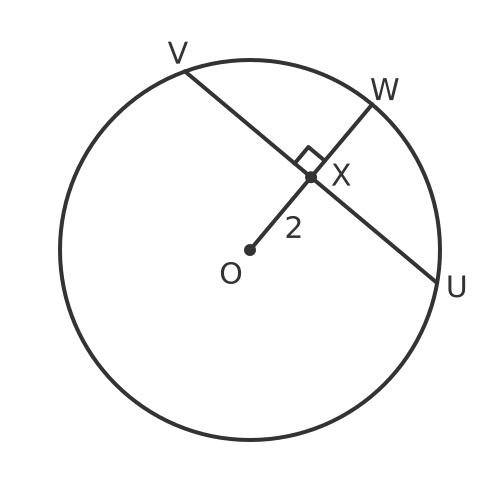
What is the length UV? Give a reason for your answer.
Question 4
The diagram shows a circle with a chord BA. The radius OC meets the chord at an angle of 90°.
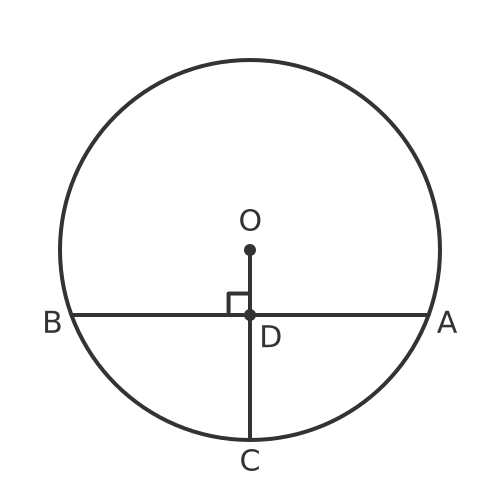
Prove that the two triangles, AOC and BOC, are congruent.
See also
- Parts of a circle
- Angle at the centre of a circle is twice the angle at the circumference
- Angle in a semicircle is 90°
- Angles in the same segment of a circle are equal
- Opposite angles in a cyclic quadrilateral add up to 180°
- Tangent and radius of a circle meet at 90°
- Two tangents from a point have equal length
- Alternate segment theorem
- Two radii form an isosceles triangle

Join the GraphicMaths Newletter
Sign up using this form to receive an email when new content is added:
Popular tags
adder adjacency matrix alu and gate angle answers area argand diagram binary maths cartesian equation chain rule chord circle cofactor combinations complex modulus complex polygon complex power complex root cosh cosine cosine rule cpu cube decagon demorgans law derivative determinant diagonal directrix dodecagon eigenvalue eigenvector ellipse equilateral triangle euler eulers formula exercises exponent exponential exterior angle first principles flip-flop focus gabriels horn gradient graph hendecagon heptagon hexagon horizontal hyperbola hyperbolic function hyperbolic functions infinity integration by parts integration by substitution interior angle inverse hyperbolic function inverse matrix irrational irregular polygon isosceles trapezium isosceles triangle kite koch curve l system line integral locus maclaurin series major axis matrix matrix algebra mean minor axis n choose r nand gate newton raphson method nonagon nor gate normal normal distribution not gate octagon or gate parabola parallelogram parametric equation pentagon perimeter permutations polar coordinates polynomial power probability probability distribution product rule proof pythagoras proof quadrilateral questions radians radius rectangle regular polygon rhombus root sech segment set set-reset flip-flop sine sine rule sinh sloping lines solving equations solving triangles square standard curves standard deviation star polygon statistics straight line graphs surface of revolution symmetry tangent tanh transformation transformations trapezium triangle turtle graphics variance vertical volume volume of revolution xnor gate xor gate
